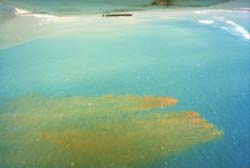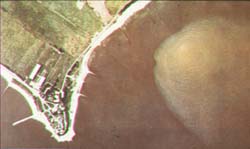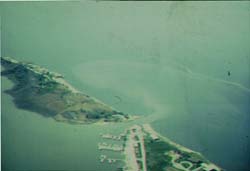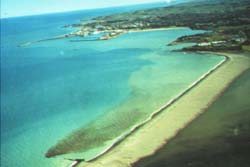Mixing zones in oceans are strongly influenced by ambient density stratification and currents. In addition, most municipal wastewater discharges have the density of freshwater giving rise to density current buoyant spreading processes after boundary interactions.
The first step towards specifying the ambient conditions in the ocean is to determine whether the receiving water body should be considered "bounded" or "unbounded." It is usually necessary to have access to cross-sectional diagrams of the water body. These should show the area normal to the ambient flow direction at the discharge site and at locations further downstream. These cross-sections should then be schematized into equivalent rectangular areas normal to the flow. Oceans should generally be considered as "unbounded".
If the water body is constrained on both sides by banks such as in rivers, streams, narrow estuaries, and other narrow watercourses, then it should be considered "bounded." However, in some cases the discharge is located close to one bank or shore while the other bank is for practical purposes very far away. When interaction of the effluent plume with that other bank or shore is impossible or unlikely, then the situation should be considered "unbounded." This would include discharges into oceans, wide lakes, wide estuaries, and coastal areas.
Ambient current and density field data in oceans and estuaries can be complex. Detailed hydrographic data on bathymetric, velocity, salinity, and density profiles is recommended for regulatory mixing zone analysis in oceans.





.jpg)

